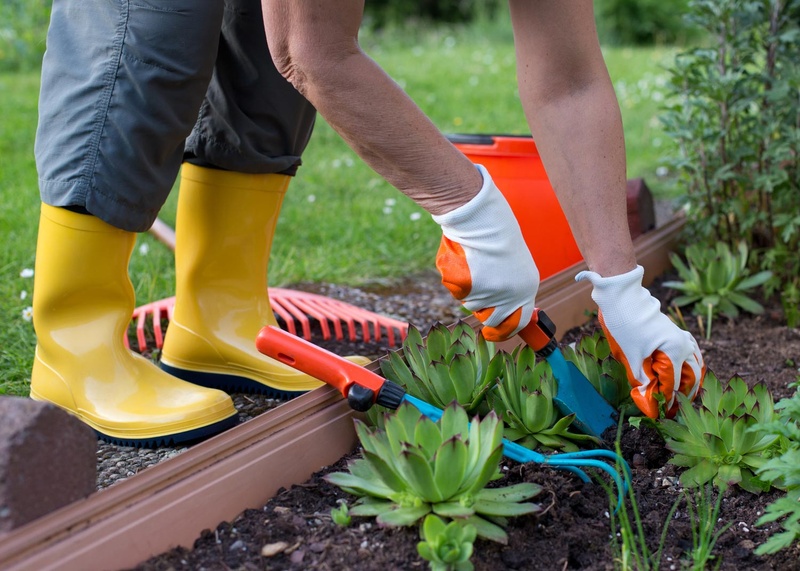
Five Tips for Safe Working Outside
Working outside in Florida winter weather is generally delightful. Gardeners who take a few simple safety precautions can enjoy work days throughout the winter without injury or accident. It comes down to protective clothing, proper lifting, awareness, and respecting machinery and wildlife.
Florida winter temperatures call to every gardener in the state to get outside and work! It’s the perfect time for landscaping tasks, from clearing brush and installing trees to building raised beds and planting winter annuals.
Don’t let the fabulous weather lull you into a disregard of safety precautions, though. Bug bites, snake bites, lifting injuries, and cuts or bone breaks can at best mar the day and at worst put you in the hospital.
Here Are a Few Tips for Staying Safe as You Work Outside:
1. Wear protective clothes.
Make sure clothing is tucked in, buttoned, tied or otherwise secured so that there are no loose or flapping parts that can get caught in machinery. Wear shoes or boots and gloves. Tie back long hair.
2. Turn off powered equipment.
If you’re using a lawn mower, edger, weed wacker, tiller, chainsaw, or chipper, stop the motor or engine completely before trying to loosen a jam or remove a wedged object.
3. Know your wildlife.
Remember that Florida is home to 50 species of snakes, and six of these are deadly. The six deadly Florida snakes are the Southern Copperhead (also called the Chunkhead); the Florida Cottonmouth (or Water Moccasin); the Eastern Diamondback Rattlesnake; the Timber or Canebrake Rattlesnake; the Dusky Pigmy Rattlesnake, and the Eastern Coral Snake.
Five species of venomous spiders occur in Florida: four types of widows (southern black, northern black, red, and brown) and the brown recluse.
In addition to spiders and snakes, there are a few more venomous creatures in Florida: fire ants; bees, wasps, and hornets; scorpions; and certain types of caterpillars.
It’s good to have a basic knowledge of venomous snakes, spiders, and bugs and to know what they look like and be able to produce a description or photo if you get stung or bitten.
The above critters can be found in brush, under logs, in corners of patios, and inside pots and planters. As you’re working outside, keep your eyes open, have a clear view of anything you reach into, and remember you share your landscape with myriad inhabitants of the natural world.
4. Watch your step
Falling injuries usually occur in conjunction with trips and slips. Trips and slips usually occur when people don’t watch where they’re going or don’t consider the impact of weather conditions on walking surfaces.
Pay attention to what’s underfoot. Watch for slick surfaces like grass, mud, or wet pavement. Be aware of roots, depressions, or obstacles that could make you fall if you don’t see them while walking or carrying a load.
5. No heavy lifting
Lifting injuries occur when a person either lifts the wrong way or tries to lift too much weight. Whether it’s moving a large clay pot, hauling bags of compost, or carrying lumber to build a raised bed, get help or leverage your lifts with a dolly or wheelbarrow. Slide a load rather than picking it up. Take breaks between lifting tasks. Wear shoes with treads. Lift with your legs.
Great enjoyment can be had working outside at this time of year. Taking a few simple precautions reduces the chance of accident and injury and ensures productive work days throughout the winter.